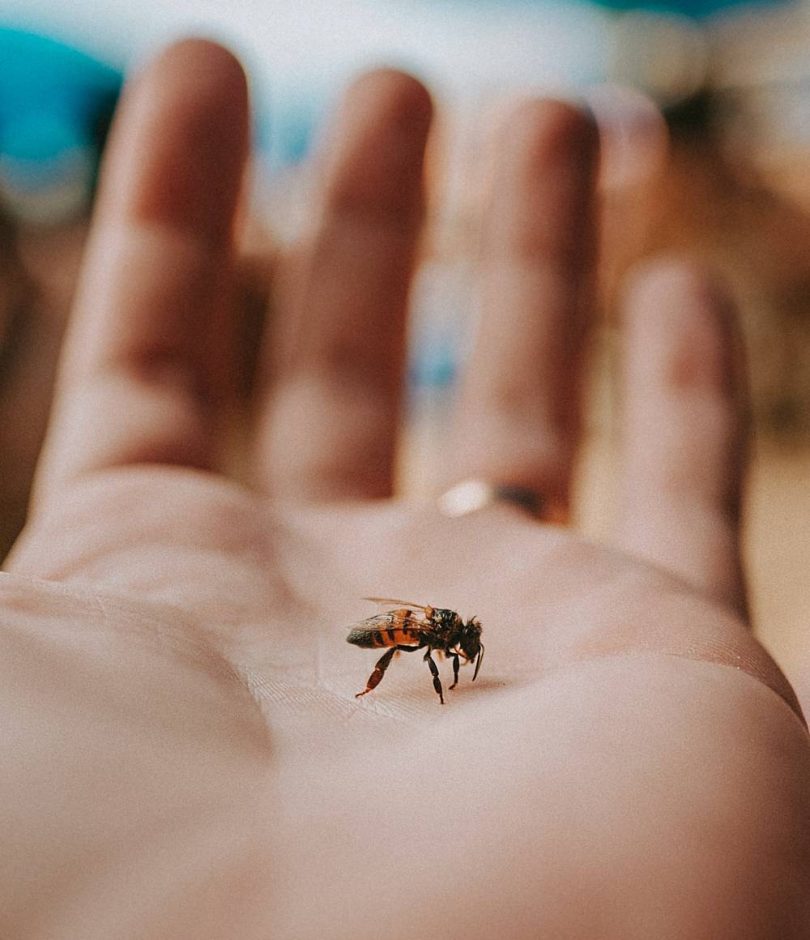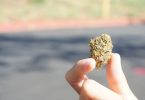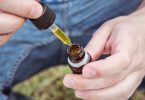Bees are the world’s most important pollinator. They collect pollen as an important part of their diet, and a typical-size hive of bees collects around 57 kg (125.4 lbs) of pollen per year [1]. Through evolution, flowers have adapted to hide their nectar deep within, ensuring that every time a bee seeks that sweet nectar inside a flower, there’s a good chance at least some pollen is going to stick to their bodies. Bees have specialized anatomy in their legs made for collecting pollen. Commonly, these parts are referred to as the “pollen rake” and the “pollen basket.” Straightening their legs they push pollen further into the “basket,” leaving room for more [2].
Honey bees in particular are known to visit only one type of flower on a single foraging trip, also known as “floral fidelity.” Pollination by bees also allows flowers to share genetic material with each other. In this way, male flowers can transfer their pollen in female flowers of the same species through bee-assisted cross pollination.
So, how can this information be useful to cannabis farmers? Cannabis is anemophilous meaning that it is a wind-pollinated plant. [3] When it comes to legally growing cannabis to be marketed as hemp, wind-pollination can be a problem if there are any nearby plants with tetrahydrocannabinol (THC) content higher than the legal limit.
It is possible to control pollination by using bees. However, because cannabis has adapted to be wind pollinated, the flowers do not produce a sweet nectar designed to attract these insects. Consequently, bees are less likely to pollinate cannabis flowers when other nearby, nectar sweet sources are abundant. Still, cannabis tends to flower in late summer, after many other flowering plants have begun to go dormant. Because of its late flowering characteristics, cannabis provides a crop that can help saving bees during low-yield conditions for other plants. And, you know, as they say, “Save a bee, save the world.”
Bee-pollination can be a useful way to reduce the risk of unfavorable cross-pollination. Furthermore, a significant portion of cannabis used for cannabidiol (CBD) isolation is produced in indoor growing facilities, especially if that CBD is designed for medicinal products, where carefully maintaining potency to desired levels is essential. Indoor cannabis farmers can use bees inside their greenhouse to help cultivate stronger, healthier plants.
Altogether, bees provide an important means to create a sustainable cannabis crop and reduce the risk of cross-contamination by other cannabis chemotypes.
Bees do not experience any of the psychoactive effects of cannabis plants, as they do not have cannabinoid receptors. Also, they don’t make cannabis honey, because they use nectar to make honey and not pollen.So cannabis derived honey products are generally CBD-infused products.
References:
[1] https://edis.ifas.ufl.edu/publication/IN868 [2] https://www.honeybeesuite.com/how-bees-transfer-pollen-between-flowers/ [3] Wizenberg SB. et al. Comparing methods for controlled capture and quantification of pollen in Cannabis sativa. Appl Plant Sci. (2020) ;8(9):e11389. doi: 10.1002/aps3.11389. [journal impact factor = 2.15] [times cited = 4]









